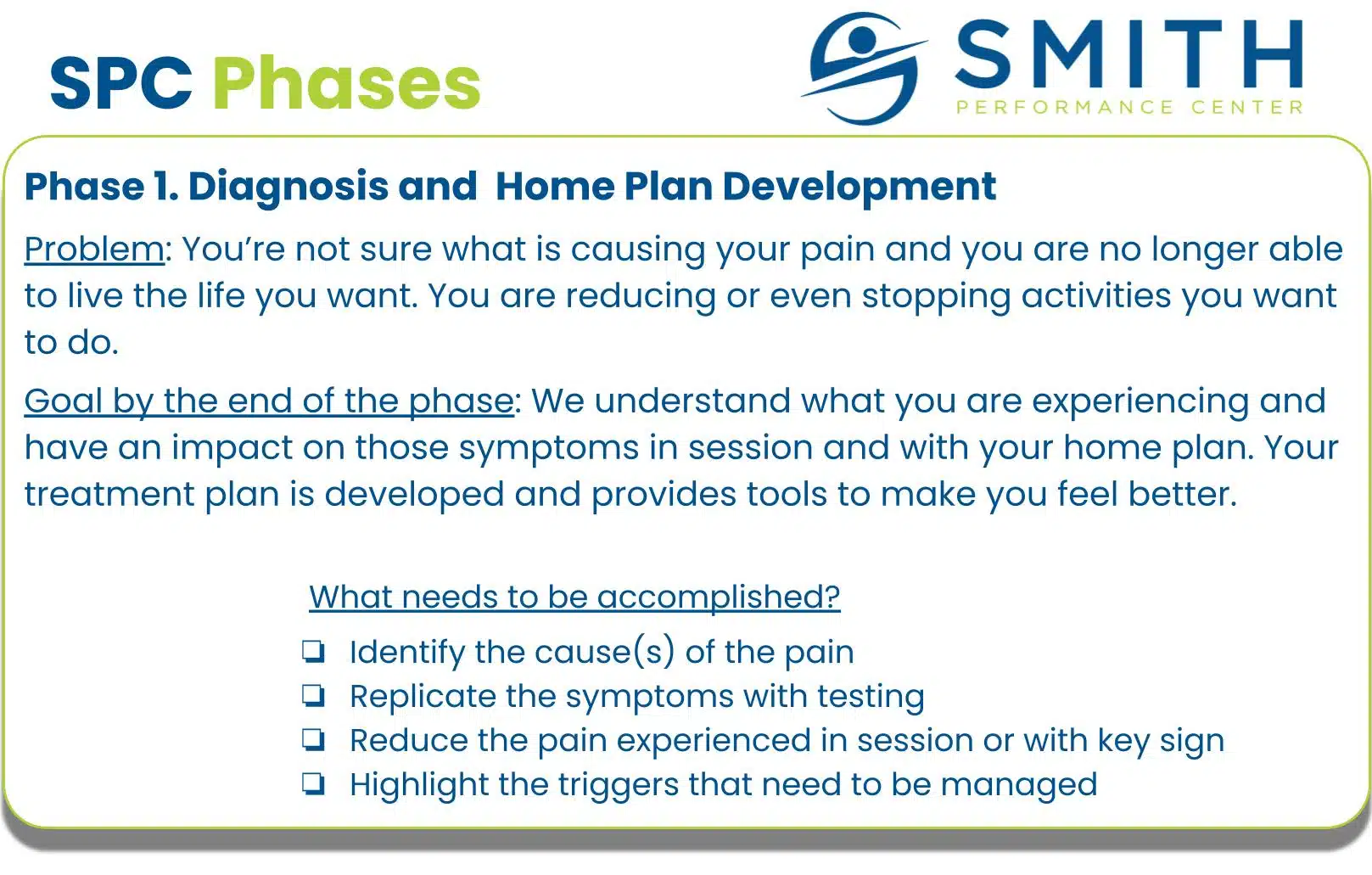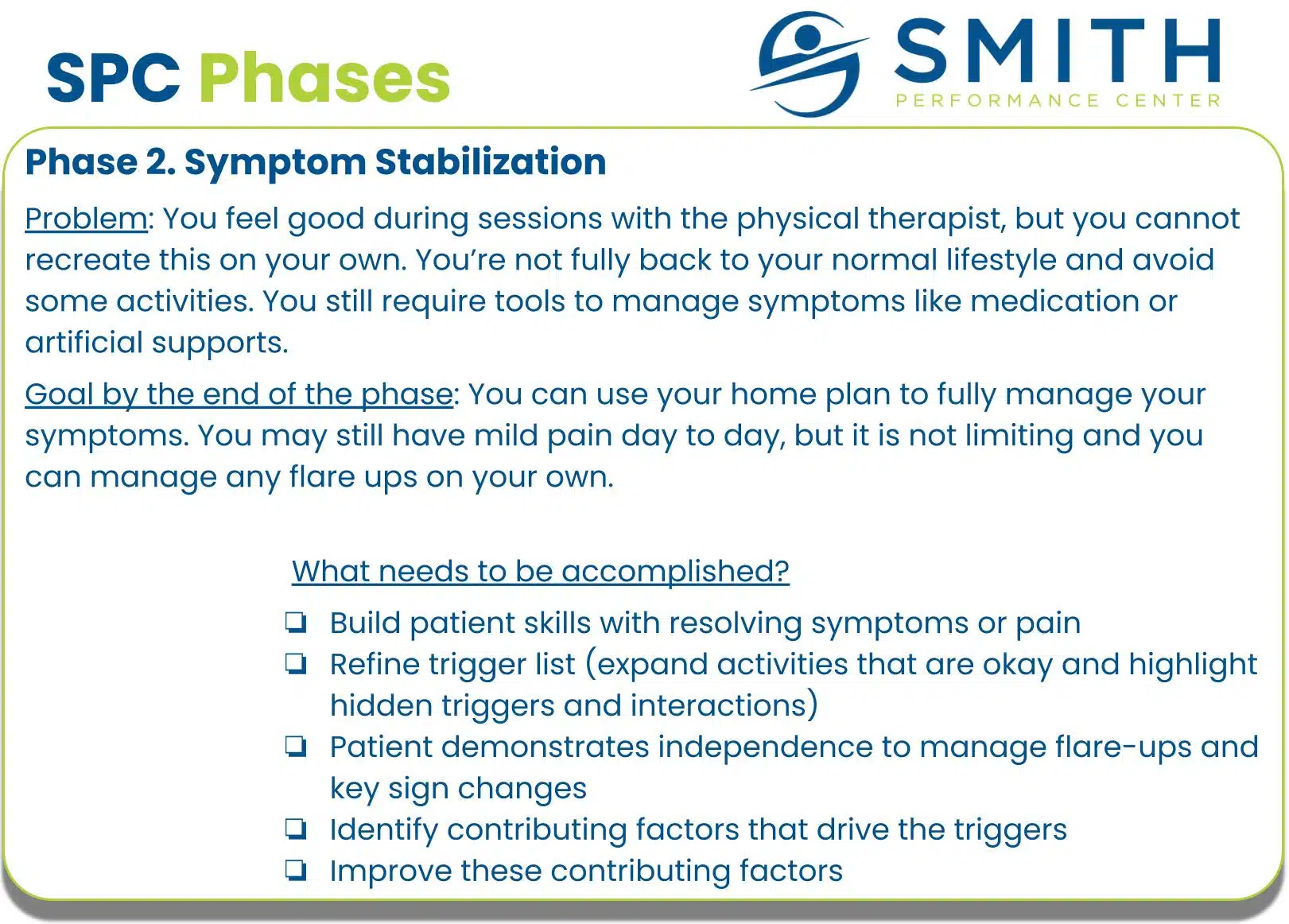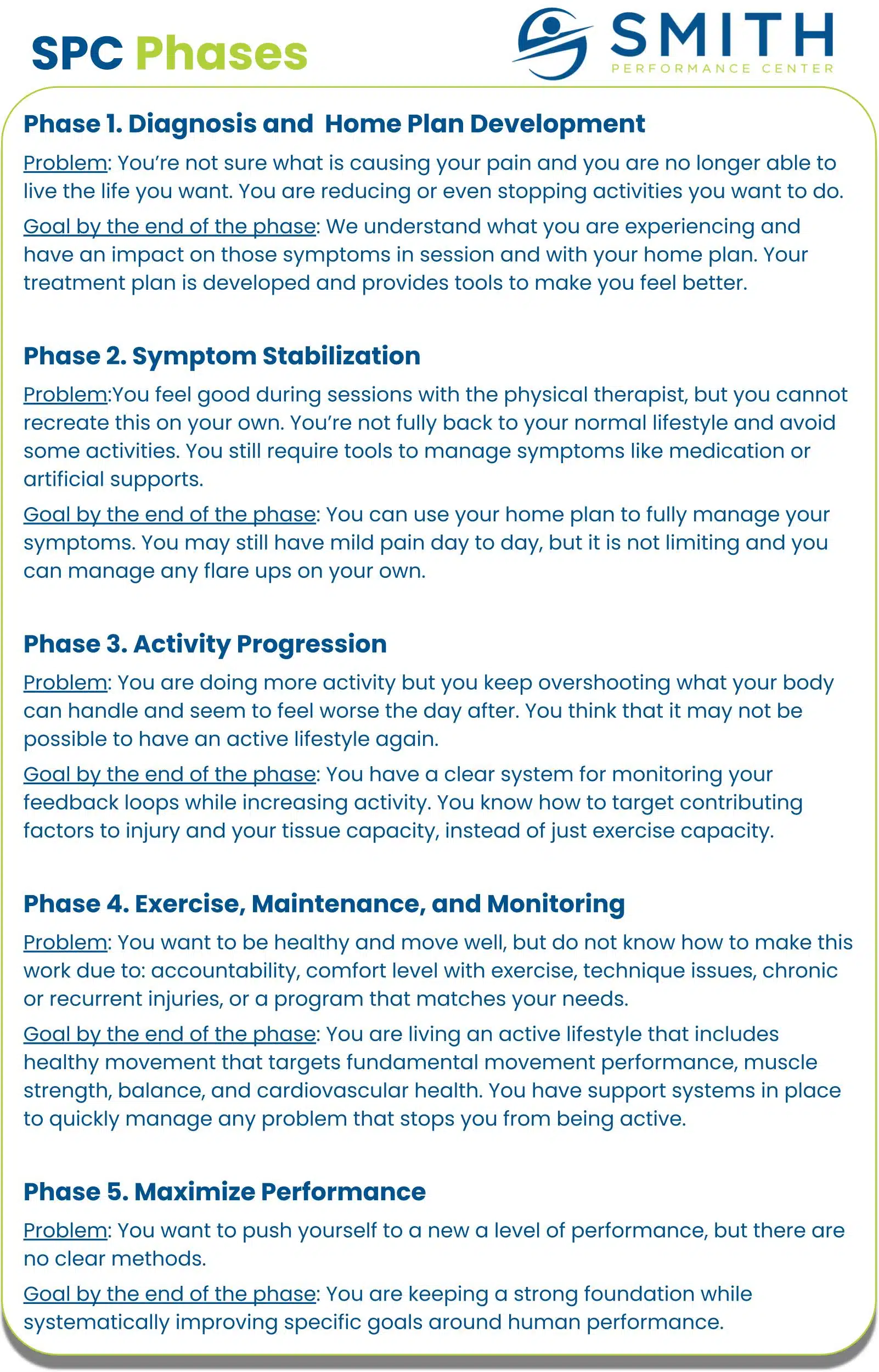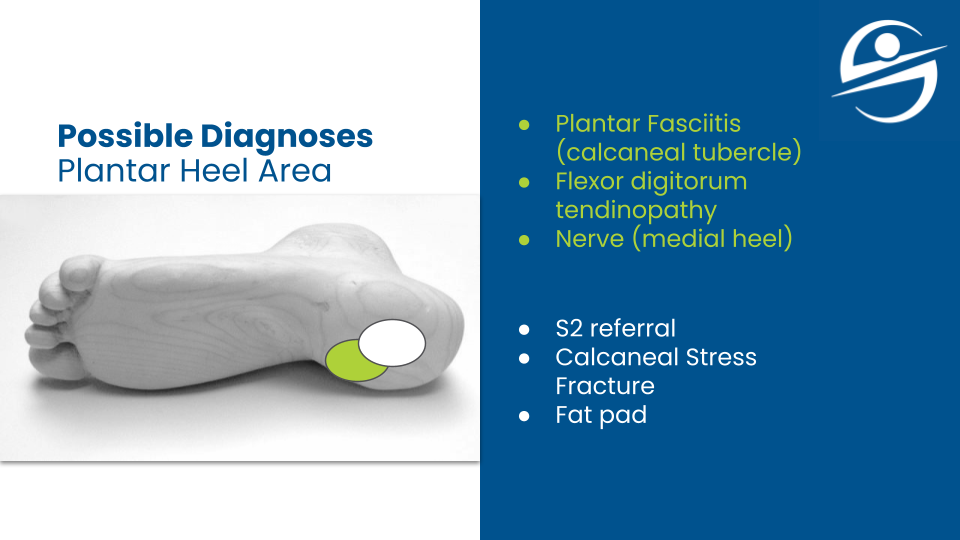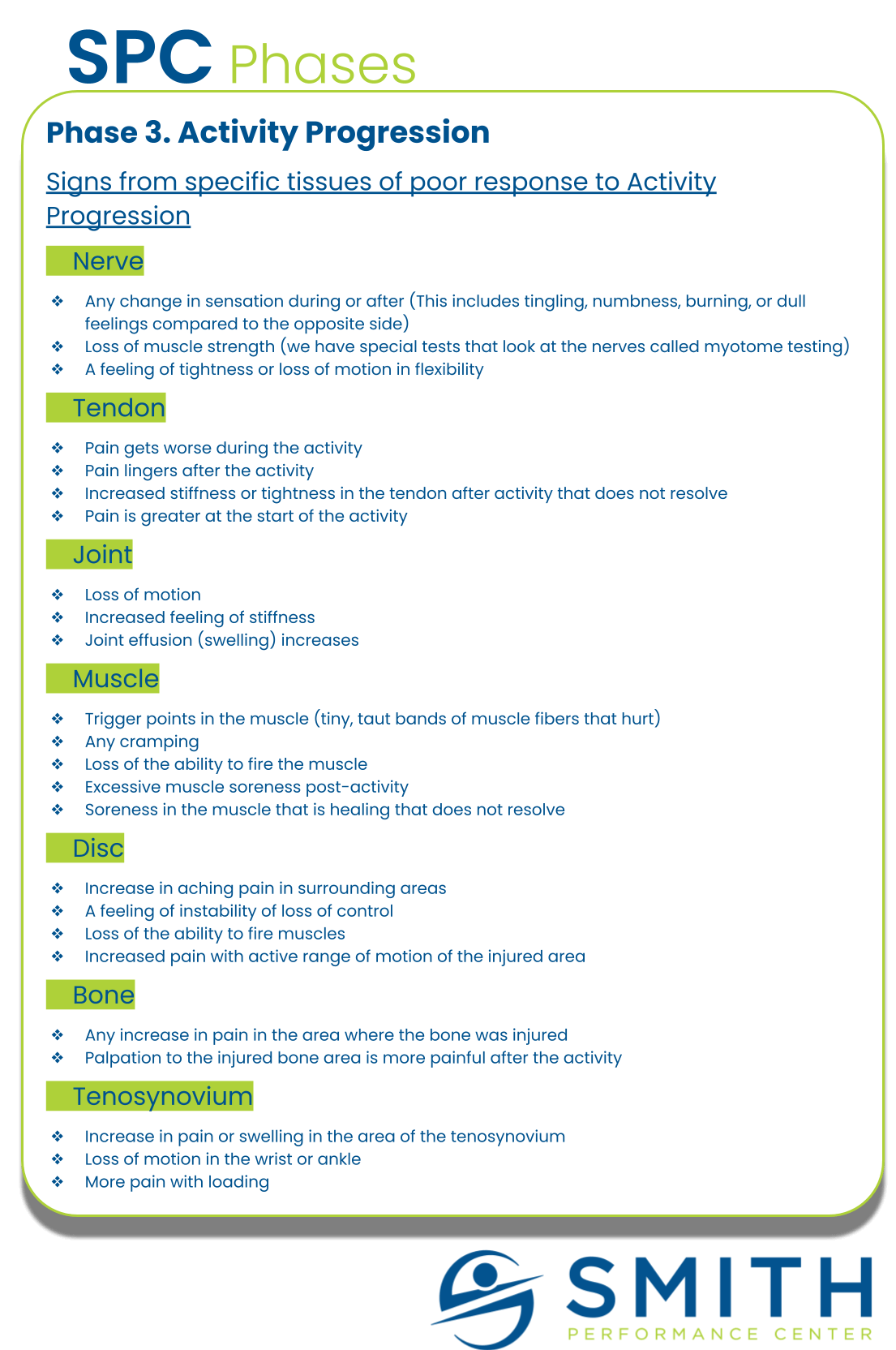There are numerous problems facing people in living an active, healthy life, but it can be difficult to articulate the problem that needs to be solved.
Let’s look at two people dealing with low back pain. One person bent over this morning to grab a pencil and now cannot stand up straight. The second person developed back pain years ago and stopped doing certain movements because of discomfort. The pain is still present daily and they use a combination of meds, massage, and chiropractic to keep big flares up away.
Their problems are different despite both dealing with low back pain.
The solutions are very different.
The person who just hurt their back needs a diagnosis and a home plan targeting healing strategies and triggers. This may mean more frequent visits and removing anything that makes their symptoms worse. We will likely see this person a few times per week and modify their day-to-day activity until the pain is manageable.
This is problem number one.
The second person with chronic recurrent low back pain has a less clear problem that will need to be evaluated. Can they reduce their own pain? Why do they need to use massage and chiropractic to hold symptoms back? If they cannot reduce their own pain and need these external tools to hold symptoms stable, then this is problem number two.
By defining the problem, you know where to start and what you need to focus on to be successful.
The 5 Problems
We find these 5 problems represent the common needs:
- Pain and injury are keeping you from normal activity. You do not know the cause or what to do.
- You are unable to manage your own pain without help from a medical provider or medication.
- You want to increase your activity level from where you are now, but this leads to you feeling bad again.
- You want to have an active lifestyle but seem to fall off your workouts.
- You want to perform at a high level and stretch your physical capabilities but do not know where to focus your energies.
Pain and injury are keeping you from normal activity and you do not know the cause or what to do
Here are some signs this is your main problem
- The cause of this pain is not well understood.
- You limit activities, even those you enjoy, because of the symptoms it produces.
- You may have a diagnosis but it has not been helpful at this point.
- Different medical providers may disagree on what is your problem and how to handle it.
- You are unable to reliably reduce your pain with a medical provider or other healthcare tool.
If this is your problem, we start with the physical therapy initial evaluation. We work through and confirm the diagnosis.
You are unable to manage your own pain without help from a medical provider or medication
Here are some signs this is your main problem
- You can get pain reduction with a medical provider, but it does not last and you cannot replicate it.
- You feel like you are on the edge of increasing your pain with most activities even at a low level.
- Your pain may appear random.
- You feel good during an activity but then later feel terrible.
- You are afraid that your pain will flare because you cannot reduce it well on your own.
- You have stopped most activities that cause symptoms.
- There is a blurring of your triggers (things that cause you to flare up) and impairments (things you cannot do well due to changes in your body)
If this is your problem, we start with the physical therapy initial evaluation. The focus of treatment becomes focused on you being able to replicate the physical therapy treatments. We also start to address contributors to the symptoms.
You want to increase your activity level from where you are now, but this leads to you feeling bad again
Here are some signs this is your main problem:
- You experience good days followed by bad days when trying to work out or do more.
- When you exercise, it seems easy but your pain or injury gets worse.
- You have removed activities you enjoy from your routine and they have never returned.
- You are coming back from a big surgery and it seems that everything causes you to feel overly sore and terrible.
- You feel impatient to return to your old exercise levels, but your tissue capacity is holding you back, not your exercise capacity.
If this is your problem, we may start with the strength coach movement assessment or a physical therapy initial evaluation. We need to know what tissue is involved and make sure you can handle flare-ups on your own. If you cannot, then the physical therapist will help you first followed by the strength coach taking over your activity progression.
You want to have an active lifestyle but seem to fall off your workout routine
Here are some signs this is your main problem:
- You are new to exercise and want to learn how to move well.
- You have a gym membership, but you don’t consistently use it.
- You are successful at staying consistent in one form of exercise, such as running or biking, but strength training does not seem to stick.
- You are coming back from an injury and have been discharged from physical therapy or your provider, but you want to do more and are not back to your previous level of fitness.
- You have an injury that is well-managed but can occasionally flare up.
- You seem to have an injury bug but currently do not have any problems.
If this is your problem, we start with a movement assessment with the strength coach. The movement assessment focuses on the issues that will potentially lead you to stop exercising.
You want to perform at a high level and stretch your physical capabilities but do not know where to focus your energies
Here are some signs this is your main problem:
- You bounce through different coaches and programs but are not satisfied with the results.
- You want to support a competitive sport.
- While you may enjoy exercise, it is a tool you use for other goals.
- You do not have any issues with staying consistent with your exercise.
- You like to have metrics that are tracked and monitored for improvement.
If this is your problem, we start with a movement assessment to build out your goals and programming.
If the problem is clear, we can provide a solution
If you do not understand your problem, you risk finding a solution that is not a solution.
If you have pain that is stopping all of your activity and it’s not clear why, then the solution is to understand what is causing the pain. This requires us to diagnose the pain generator and then reduce the pain.
If you keep trying to live an active lifestyle but stop exercising, then the solution is to find a better method of accountability. This requires you to know why you stop, what strategies will keep you going, and what puts you at the greatest risk of stopping.
What problem are you currently facing?
We help people struggling with pain, injury, and inactivity manage and improve their health through an integrated system of physical therapy, strength training, education, and community support.
If any of these problems resonate with you, call us or schedule an appointment below.

